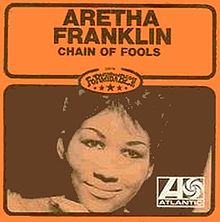Hello Jeff,
As an avid follower of yours, I’m constantly learning the do’s and don’ts of executive search. Thank you for this vital information!
I can’t imagine this is the first question of this kind. But if anyone can help me, it’s you.
My client engaged me in an a VP contingency search for which I introduced a VP from a similar business. It took much convincing to ignite the interest of this candidate and my client was very pleased with the introduction. They interviewed my candidate and formed quite a quick bond — several meetings later, the VP candidate received a verbal offer. After much contemplation, the candidate felt she was not ready to leave her employer for a vertical move and she declined the position.
Here’s where it gets dicey: in lieu of accepting the job offer, my candidate offered up a referral — one of her subordinates who she felt was ready to advance into a VP role. So, in essence the VP candidate who I sent to my client, in turn directly referred a candidate to my client who they ultimately hired.
My client and I had been updating each other through weekly phone calls. It was during a call one month ago that I learned my candidate directly referred a new candidate to them.
I feel I am 100% the procuring cause in that it was discussions with my candidate that led to the ultimate hire. I did not directly provide the resume of the person who was hired, rather I made the introduction to the person who would ultimately make the referral. The referring party would not have been aware of the opportunity had I not reached out and made the introduction.
Course of events:
A. Reached out to Candidate, informed her of VP opportunity and successfully engaged Candidate with Client.
B. Client had several meetings and phone call with Candidate over the course of one month.
C. Candidate declined position, but referred New Candidate who then engaged with my client.
D. Client hired New Candidate, who was referred by initial Candidate.
“D” could not have happened without “A” first occurring.
Do I have the right to a fee here?
Thank you for all your help!
Robert Sawyer
Jeff’s Response
Hi Robert,
It’s great hearing from you after all these years! Thanks for writing, and laying out your procuring cause case so methodically for our readers.
Before we get into the collection issues you raised, let’s get everyone in the mood for some “but for” buffoonery. Here’s how:
- Say, “No-curing cause.”
- Go to www.placementlaw.com.
- Click the Placement Fee Collection Quiz on the bottom row.
- Take the PFCQ.
- Click the Placement Law Language Quiz button on the bottom row.
- Take the PLLQ.
- Click the Answers to Placement Law Quizzes button on the bottom row.
- Grade yourself.
- There’s a bit of placement lore in placement law.
Most recruiters haven’t been around long enough to know that procuring cause is a shorthand way of saying “procreating cause.” It’s actually documented in Genesis Chapter 2 of the Old Testament. If you read it carefully, you’ll clearly see that Adam and Eve were responsible for the placement of New Candidate. “But for” what they did, there would be no placement.
Adam & Eve, PC
They were therefore the procuring cause.
If you were a really hip employer lawyer, you would jive with the judge that Adam & Eve, PC (procreating creators) were the PC (proximate cause) of New Candidate getting hired. You could even expand Robert’s “A-B-C-D” rap to all 26.
To deny Adam & Eve, PC the placement fee would be heresy, don’t you think? I can hear the rap now:
Adam and Eve, PC. Pay it the placement fee.
You must admit it’s got iambic pentameter.
But I can’t advise discussing sex in the workplace that procuring cause conversations require. Instead I feature the strict liability concept that allows victims to sue manufacturers of defective products just for peddling them. In our business, we do this through a referral period. Usually one year, but it can vary.
Now that’s my kind of causation. Ready, aim . . .
‘Cause you hired, then you owe!
I know it gets a little legal. So let’s back up and I’ll show you how it works in real life.
Pretend you are your own lawyer. (Isn’t everyone?) I’ll pretend I’m an employer lawyer.
It’s a bench trial (judge only) – you didn’t want to spring for jury fees.
We put on (present) our cases. After the witnesses have testified and the documents have been admitted into evidence, the judge hears closing arguments (lawyer summations of the testimony and evidence).
You go first, since you’re representing the plaintiff (aggrieved party who filed the lawsuit).
Your closing argument consists of reading that JOC inquiry you sent me. You explain that logical, linear (straight line) A-to-B-to-C-to-D trail from the referral of Candidate to her referral of New Candidate.
Then you rest your case.
Now it’s my turn, representing the defendant. This is how I snap the trap:
I stand up, reach into my fanny pack and whip out my Lawyer’s Pocket Bible. Starting at Genesis Chapter 2, I commence to fire and brimstone about how Adam & Eve, PC (procreator creators) — rather than you — were really the PC (procuring cause) of New Candidate’s hire.
Legally, Candidate’s referral of New Candidate was an independent intervening act that didn’t break the chain of causation starting with the act of Adam & Eve, PC. It was a dependent intervening act and therefore just another link in the chain of causation culminating in the hire.
 Then I go back to the counsel table, turn on my blaster, and play Aretha’s causation gospel Chain of Fools. The bailiff grabs the security guard outside the courtroom. They commence to boogie together down the hall. The judge just sits there chomping on an apple and stomping in time with the beat.
Then I go back to the counsel table, turn on my blaster, and play Aretha’s causation gospel Chain of Fools. The bailiff grabs the security guard outside the courtroom. They commence to boogie together down the hall. The judge just sits there chomping on an apple and stomping in time with the beat.
Since the courtroom doors are open, that trap’s
SNAP!
wakes up everyone in the law library.
Oh, Robert – this is why I went to law school!
Alright, let’s stop pretending now. You can see where this is going for you — to placement purgatory.
Why placement purgatory? Because you analyzed this causation matrix with a linear procuring cause probe. It’s linear because you are drawing an imaginary straight line between your referral (the “cause”) and the hire (the “effect”). The legal phrase for that straight line (between cause and effect) is efficient procuring cause.
This is one of the extremely rare cases where your linear analysis is probably factually correct. So correct that the employer might not even argue about it.
Not that it usually happens that way, though. Keep in mind that the employer controls New Candidate (its employee), the personnel file (with another application form changing the answer to the question, “How were you referred to [name of employer]?”), the money, and the employer’s lawyer.
‘New Candidate’ Is No Candidate
Yet even if the employer is honorable, your problem isn’t logic or even facts!
Your problem is law. Or rather, the lack thereof. There’s no law that leaps from the subject matter of the contract (Candidate) to a stranger to the contract (New Candidate). So the news is that “New Candidate” is “No Candidate.”
Essentially, you are attempting to retroactively appoint your candidate as your agent – your employee – to place her friend. Even if she agreed, how would that work? The employer didn’t agree to pay a fee for the friend’s hire prior to the referral.
An employer lawyer could have a feast of biblical proportions over what you didn’t do to earn the fee. Starting with the undisputed fact that New Candidate is a complete stranger.
Robert, your attempt to use causation is really an attempt to get paid for all the good work you did to get Candidate to warm that employer’s seat. That invokes the reality retort best expressed as “Welcome to contingency-fee search.”
Civil law (which is what controls in everything we discuss) is a complicated jumble of rights and liabilities between persons (including fictitious ones like corporations, and limited liability companies). The civil law also provides for enforcement of certain private agreements that create rights and liabilities between persons. Those agreements that qualify are known as contracts. Civil trial courts enforce them.
Here’s What to do For Next Time
So immediately please find some lawyer who knows the difference between a search assignment form and a fee schedule. Make sure you have a referral period in whatever fee agreement you use.
Then have the following words properly woven into it:
The fee for the services of [name of your business] is earned if a candidate or a candidate the original candidate refers is engaged to perform services, directly or indirectly . . . (emphasis added).
Finally, your unpaid work reminded me to give everyone our famous Pre-Placement Activities Worksheet. It’s pure dynamite for keeping track of all the things you don’t when you’re making a placement. It enforces full placement fees factually like nothing else since Adam and Eve commenced procreation creation.
To get it:
- Go to www.placementlaw.com.
- Click the red JEFF’S ON CALL! button.
- Type in Pre-Placement Activities Worksheet in the Subject field.
- Click Send.
I’ll reply with the master blaster.
Hope this helps, Robert. A few words professionally placed in your fee schedule, and may it never happen again!
Best always,
Jeff
